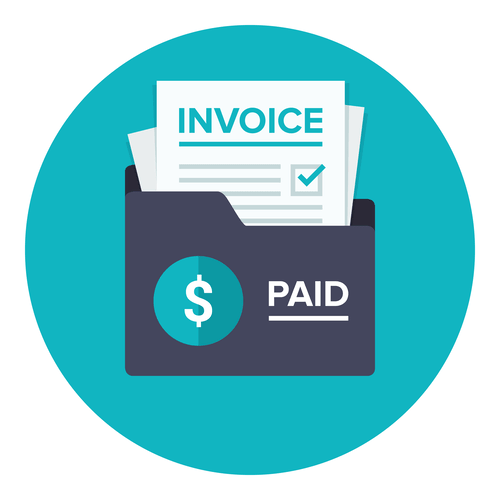Law Firm Chart of Accounts Explained: Tips & Samples

That way, the software’s capabilities align with law firms’ unique accounting challenges. Specifically, your firm needs software that can properly handle retainer funds, from the initial deposit through the transfer of earned funds into the operating account. Chart of Accounts SampleA sample law firm chart of accounts chart of accounts generally shouldn’t be copied directly into your law firm accounting software without some customization. The payment of a simple utility bill demonstrates this process in action. When you pay the bill, your cash account balance decreases and your utility expenses rise.

Trust Accounting 101 for Law Firms
It is quite common for financial reports to fall short of executives’ expectations. Accounting teams tend to focus on doing things the “right way” rather than asking readers of the financial statements what they want to see. The Third Edition provides an expanded discussion of related issues and updated case and statutory law, as well as a more comprehensive appendix featuring relevant statutes, rules and ethics opinions.
Financial data management and reporting is simple and accurate

Cash accounting makes it easy to determine when a transaction has occurred (the money is either in the bank or out of the bank) and there’s no need to track receivables or payables. Managing all of your business transactions in a separate account makes it easier for you, your bookkeeper, and your CPA to manage your accounting. If everything is jumbled into one account, come tax time, you or your CPA will have to go through your bank records to figure out which expenses are related to your business. Many attorneys prefer to get paid by credit card (online or in-person), which incur their own special fees. Sometimes these fees can become hard to track, causing you to charge the wrong client’s account. To prevent misappropriating funds from other clients, remember to only charge your clients for fees directly relating to their trust account.
Get clear on your tax obligations
- Payroll liabilities are how much the law firm owes its workers for salaries, wages, and benefits that they have earned but have not yet been paid.
- You also get smart software to help you monitor your finances and stay in control of cash flow.
- It is critical to check with the Bar Association in your state to see if they allow General Retainers.
- The political hopeful also indicated she wanted to take legal action against the BBC for their reporting.
- You can assess profitability by practice area, evaluate revenue streams, and monitor client or matter performance.
- Our work has been directly cited by organizations including Entrepreneur, Business Insider, Investopedia, Forbes, CNBC, and many others.
Once you’ve chosen a bank to work with, you’ll want to open a business checking account, a savings account, and an IOLTA (Interest on Lawyers Trust Account). CaseFox offers powerful features to manage cases, clients, and accounts efficiently. Poor accounting practices, such as struggling to track billable hours or sending out invoices late, can lead to money leakage. The firm could face compliance issues, and their books will be inaccurate (skewing the value of any accounting data derived from them). Learn more about the legal chart of accounts and view examples of formatting. This article is purely information and applies specifically to U.S. practices.
Your law firm chart of accounts is the backbone of your accounting system. This listing also provides a structure for correctly managing funds between operating accounts and pooled trust accounts. Trust account liabilities are another important liability for law companies.
Recently, I was helping a technology company owner improve his financial reporting. A chart of accounts gives you a clear picture of how much money you owe in terms of short- and long-term debts. Your COA can help you determine how much of your monthly income you can afford to put toward your debts and help you develop longer-term debt repayment plans. The role of equity differs in the COA based on whether your business is set up as a sole proprietorship, LLC, or corporation.
- Most of the time, law companies hold client funds like retainer fees, settlement payments, and court-awarded damages in trust.
- Non billable entries flow into the reporting, so you can monitor and manage them.
- For example, if depreciation is $50 per month and sales are $500 per month, depreciation is 10% of sales.
- Without proper attorney bookkeeping, it’s impossible to track what money is coming (and leaving your firm).
If you’ve ever balanced your checkbook, or simply compared the balances in your bank account and your company books to make sure they match, you’ve already performed a two-way reconciliation. Recording them as anything but that could land you in hot water https://www.bookstime.com/ with regulators and mess up your taxes. Regardless of which state you’re in, you cannot under any circumstances use an IOLTA account as a savings account or an operating account, even if the money you withdraw from the IOLTA has already been earned.
- FreshBooks offers a wide variety of accounting tools, like accounting software, that make it easier to stay organized.
- Read on to learn how to anchor your accounting system with a solid chart of accounts.
- Putting it off means having to catch up at the end of the year—the more stressful and time consuming approach.
- The discussion flows and inevitably someone says “It would be nice if we could see…” The CFO gets an exasperated expression on their face and writes the request on their notepad.
- Trust account liabilities are another important liability for law companies.
For example, Sales-Hardware could be further broken out to Sales-Hardware-Computers and Sales-Hardware-Printers. Hardware-Printers could be further broken out in Hardware-Printers-HP and Hardware-Printers-Canon. At that point, further detail may be more harm than help and lead to inaccurate accounting.





